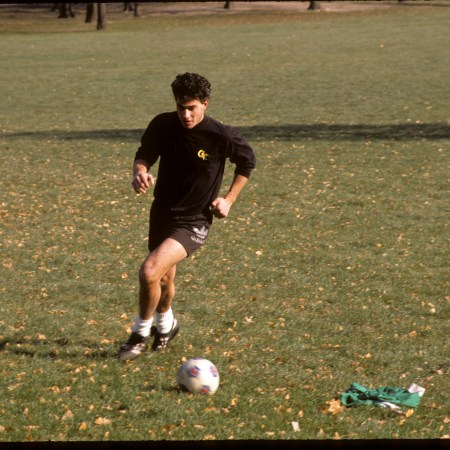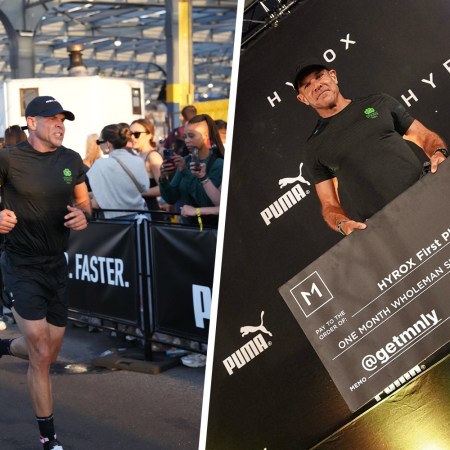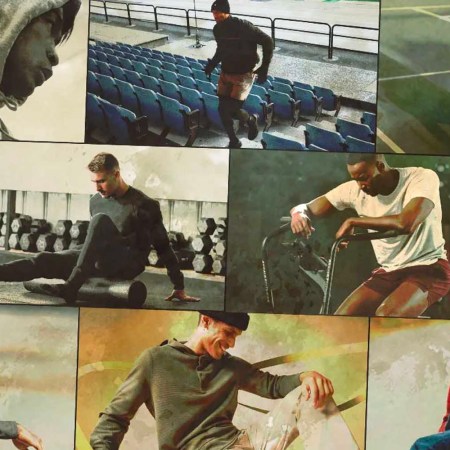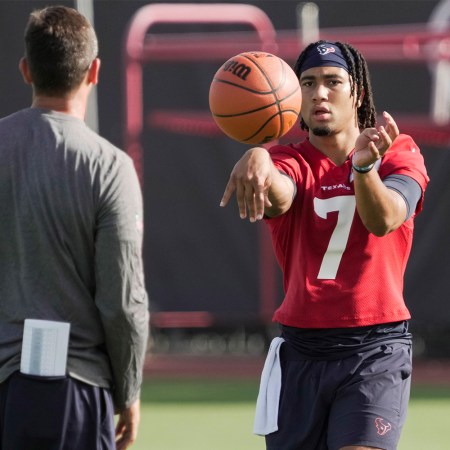The Instagram comments tell the story.
HYROX posts regularly elicit inspired replies: “This is the sickest course I’ve ever seen,” or “We have to do this” (tagging a friend). Sometimes, the comments are more aggrieved — “So upset this popped up on my feed after the race” — but the message remains the same. HYROX is now the standard for fitness racing, and perhaps the coolest trend in fitness.
It took its time finding its footing in the States; the concept was introduced in Hamburg, Germany, back in 2017. But its influence is now undeniable. That first race had around 650 participants. In 2023, HYROX hosted 90,000 athletes, plus 50,000 spectators. This past weekend, it staged a massive event on a Hudson River pier in New York City.
What is HYROX, though? A run? A Tough Mudder-type obstacle course? A festival for born-again CrossFitters? Yes, no, and sort of. Here’s what you need to know.
How HYROX Works
Before I knew the specifics of HYROX, I imagined it as a haphazard fitness field day — the content I’d see percolating online featured adults performing a seemingly endless list of exercises, often (confusingly) at the same time. But there is both rhyme and reason to the fitness race.
HYROX includes eight specific exercises, each interspersed with a one-kilometer run. Here’s the exact order of operations
- 1km Run, SkiErg, 1km Run, Sled Push, 1km Run, Sled Pull, 1km Run, Burpee Broad Jumps, 1km Run, Rowing, 1km Run, Farmers Carry, 1Km Run, Sandbag Lunges, 1km Run, Wall Balls
Eight kilometers is almost exactly five miles. As the runs are intervals, though, many competitors run them for speed. As for the individual stations, the expected weights and repetitions vary based on the level of race you’ve signed up for. Some concrete examples: you might be expected to “ski” 1,000 meters on the SkiErg, or lunge for 100 meters while carrying a 45-pound bag of sand on your shoulders.
The New Marathon?
HYROX was founded by Moritz Fürste (a former Olympic field hockey champion for Germany) and Christian Toetzke (an entrepreneur who has staged endurance events for years). I was fascinated by this quote from Toetzke: ““We are looking to the success and longevity and sustainability of the marathon.”
Wary of becoming fitness’ latest flash-pan fad, HYROX has aggressively marketed itself as bucket-list event that anyone remotely interested in wellness needs to sign up for. The brand’s tagline? “The Fitness Competition for Every Body.” They’ve now spread from their Northern European roots to 40 event locations around the globe, copying the broad-scale appeal of the world’s most popular race.
And similar to how every runner is celebrated on marathon day, HYROX has very intentionally given its events four categories: Open (the majority of entrants), Pro (the sport’s ascendant warriors, like Hunter McIntrye, who compete for prize money, invitations to major events or world championships and general prestige), Doubles (allowing you to split reps with a partner) and Relay (the day’s efforts divided four ways).
In that same, inclusive vein, HYROX appears as interested in its spectator count as its competitor count. It sold 50,000 spectator tickets last year, which, would one surmise, created both fans of the sport and future athletes in it.
Will It Last?
With expansion comes inevitable growing pains. Historically, HYROX has been an indoor event; its marquee, outdoor pop-up in New York this June, on an intensely humid day, drew criticism from its diehards. They took to Reddit — and to those usually-positive Instagram feeds — to vent about long lines, inadequate water stations and poor officiating.
Perhaps this is to be expected in large cities. (HYROX’s next big American event is in Chicago this autumn.) But then, if you’re shooting for the annual popularity of major road race…you need to take a page out of their flawless execution, too. HYROX is young enough that it will almost certainly learn from these miscues — it will have to, if it wants to survive.
That said, the sport has some huge pros in its bag. Fitness influencers are obsessed, which has created a clear trickle-down effect for more casual trainees, and sponsors have swooped in, in kind. See: Puma, Centr, Concept2, Red Bull.
I think HYROX’s greatest differentiator is the simplicity of its movements. They’re easy to learn, fun to perform, (generally) injury-averse and function well in a race format. They’re functional movements that are more familiar and less gung-ho than the conventional CrossFit fare (and the HYROX ambassadors know it, sometimes playing up the difference while promoting the sport).
Then, of course, 50% of HYROX involves running, a bankable event concept for over 70 years, which, in the age of social media and peak running clubs, has somehow gotten even more popular. Not to mention, many gyms and workout clubs have begun training their participants explicitly to the HYROX event slate (the way a track club might prepare a group for a half marathon over a matter of months).
Don’t expect HYROX to go down quietly — or any time soon. Find the full event calendar here.
Whether you’re looking to get into shape, or just get out of a funk, The Charge has got you covered. Sign up for our new wellness newsletter today.


















